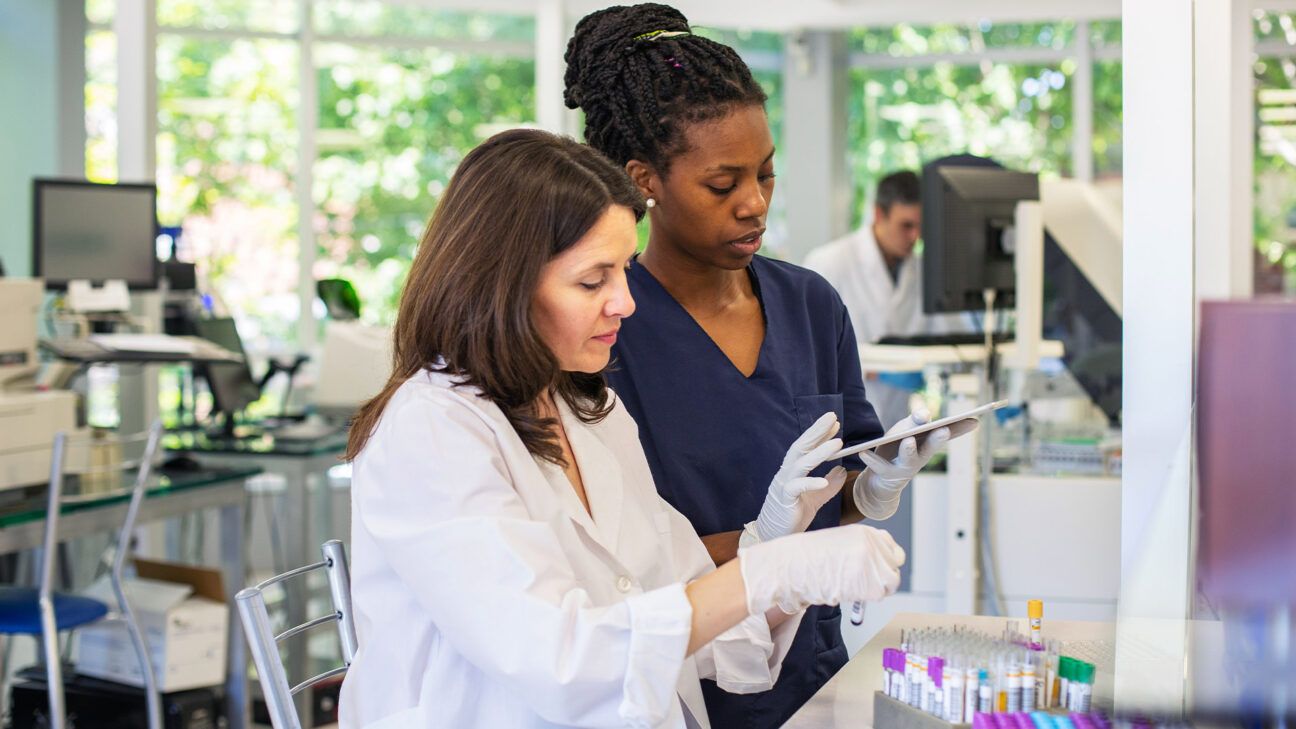
- This month the FDA has approved a treatment for an inherited blood disorder.
- The Casgevy treatment was developed through CRISPR gene-editing technology and involves modifying a person’s own blood stem cells and then transplanting them back.
- The treatment can now be used for a type of blood disorder that results in anemia.
After an initial approval in December of the cell-based gene therapy Casgevy for sickle-cell disease (SCD), the U.S. Food and Drug Administration last week approved the therapy to treat another blood disorder.
The FDA approved the therapy to treat a condition called transfusion-dependent beta-thalassemia (TDT), an inherited blood disorder that results in anemia and frequent blood transfusions.
Casgevy, a treatment developed through CRISPR gene-editing technology, involves modifying a person’s own blood stem cells and then transplanting them back. Those altered cells then attach and multiply in the person’s bone marrow and facilitate the production of fetal hemoglobin, which can help with oxygen delivery. This approval makes the treatment the first of its kind for TDT.
“Today’s approval is an important step in the advancement of an additional treatment option for individuals with beta-thalassemia, a debilitating disease that places individuals at risk of many serious health problems,” said Dr. Nicole Verdun, director of the Office of Therapeutic Products within the FDA’s Center for Biologics Evaluation and Research. “The approval of a cell-based gene therapy for this condition using CRISPR/Cas9 technology reflects FDA’s continued commitment to supporting safe and effective treatments that leverage the most promising and cutting-edge medical technologies.”
What’s the difference between sickle cell disease and TDT?
Sickle cell disease, also known as sickle cell anemia, is a genetic disease in which red blood cells have an abnormal crescent shape — hence the “sickle” part of the name. This makes them sticky and unable to bend, meaning they can get trapped in small vessels and block the flow of blood to different parts of the body. This can result in debilitating pain episodes and organ damage.
Symptoms of sickle cell anemia may appear in babies as early as 4 months old, but generally occur around the 6-month mark.
Symptoms include:
- excessive fatigue or irritability, from anemia
- fussiness, in babies
- bedwetting, from associated kidney problems
- jaundice, which is yellowing of the eyes and skin
- swelling and pain in hands and feet
- frequent infections
- pain in the chest, back, arms, or legs
Transfusion-dependent beta-thalassemia, also known as beta thalassemia major, is one of three variations of beta-thalassemia. At least 100,000 people globally have the disease, with an estimated 1,200 in the United States, according to the Boston Children’s Hospital. It manifests in genetic mutations that reduce hemoglobin production, which results in lifelong anemia and a series of other complications, Dr. Sonali Chaudhury, the section head for the Stem Cell Transplantation and Cellular therapy Program at the Ann & Robert H. Lurie Children’s Hospital of Chicago, told Heathline.
“It manifests clinically as jaundice, growth retardation, hepatosplenomegaly, endocrine abnormalities, and severe anemia requiring life-long blood transfusions. Life-long transfusions also result in iron overload,” said Chaudhury.
Before this new gene therapy the treatment for the condition was a stem cell transplant or supportive care.
What are the advantages of Casgevy?
Casgevy, which will be produced by Vertex Pharmaceuticals and administered via authorized treatment centers, should be available to patients 12 years and older early this year.
With this cell therapy there is greater potential for a person to be cured for TDT and SCD with less short- and long-term side effects compared to a stem cell transplant.
And stem cell transplants that would have been stymied or delayed by a wait for appropriate donors can now be accelerated by using a person’s own cells through Casgevy, Chaudhury said.
“Before these therapies, the only available curative therapy was allogeneic stem cell transplant, which may have complications and was not accessible to all due to lack of appropriate donors,” Chaudhury said.
What are any potential drawbacks of Casgevy?
Chaudhury explained that some short- and long-term toxicities can occur with this treatment, which can result in nausea/vomiting, mucositis, risk for infections, hair loss, liver toxicity, pulmonary toxicity and infertility. And the cost — Vertex has listed it at $2.2 million for a single course of treatment — will likely create some significant issues with access for people who need it.
“The product is very expensive and will be accessible only to patients with insurance benefits. Will be cost prohibitive and likely inaccessible to patients in low income/low resource countries,” Chaudhury said, adding that there are also potential issues that could stem from other medical conditions. “Casgevy has not yet been tested in patients with stroke and neurological involvement in SCD or patients with TDT with severe iron overload with liver damage.”
Takeaway
Casgevy, a new gene-editing therapy for blood disorders, has been approved as a treatment for sickle cell disease and transfusion-dependent beta-thalassemia.
The potential for curing these two blood disorders, which can result in frequent blood transfusions and lifelong anemia, is enormous.
But the cost of a single course of treatment — $2.2 million — ultimately raises questions about accessibility.
